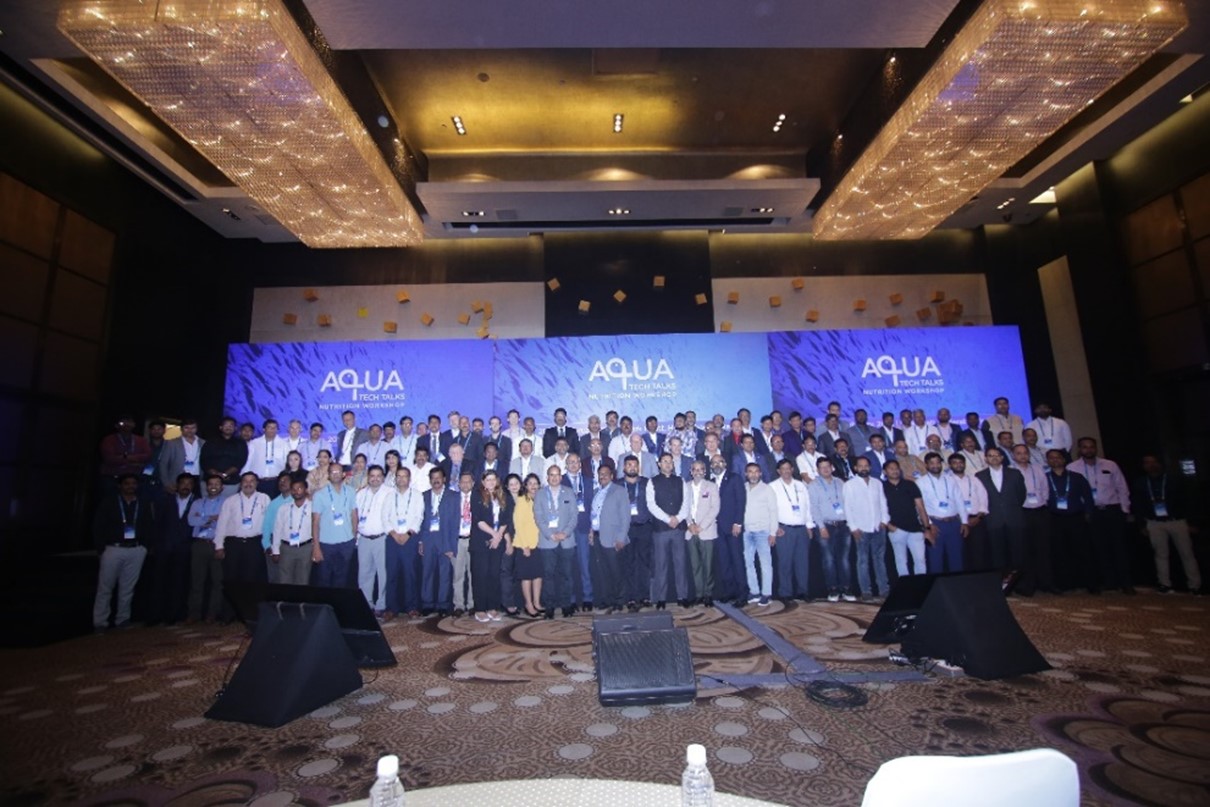
The aquaculture industry continues to expand to meet global fish and seafood demand, and USSEC is committed to supporting its development. The Food and Agriculture Organization of the United Nations (FAO) expects aquaculture production to increase nearly one-third from 2018 to 2030. Many consider aquaculture a key part of the solution to sustainably meeting human protein needs.
“With aquaculture expansion comes the need to provide sustainable feed ingredients,” says Tom D’Alfonso, Ph.D., USSEC director of animal and aquaculture. “That’s where U.S. Soy shines — as a verified sustainable solution to meeting aquafeed protein needs in many species. USSEC highlights U.S Soy for the aquaculture industry through ongoing education, long-term relationships, and investments in innovation.”
Rapid growth and technological advances in aquaculture create an industry culture eager to learn. The USSEC team works closely with aquaculture producers and industry partners to share new information and deepen knowledge as technology improves. With soy checkoff and U.S. government support for agricultural trade, they consistently position U.S. Soy as an aquafeed solution with high nutrient value, protein density, digestibility, and amino acid profile to support growth and health.
One region experiencing steady growth is South Asia, now contributing significantly to fishery production in Asia. Globally, India ranks No. 2 in aquaculture production, after China.
“As the aquaculture industry in South Asia modernizes and diversifies, the need to ensure quality feed and feed ingredients for sustainable, healthy fish and shrimp is increasing,” D’Alfonso says. “USSEC research and events meet that need.”
To share how U.S. Soy fits aquafeed needs, the USSEC team hosted International Aquaculture Feed Formulation Database (IAFFD) workshops in Bangladesh and India. Aquafeed formulators, nutritionists and consultants learned how to use software based on the IAFFD to develop rations for shrimp and fish. The Aqua Tech Talks Nutrition workshop held in Hyderabad, India, welcomed representatives from leading aquaculture companies in Bangladesh, India, Nepal and Sri Lanka. Conversations reinforced the growing need for sustainable plant protein, like soy, as the top ingredient choice for aquafeeds.
“Similar efforts focused on aquaculture nutrition occur in other regions of the world,” he adds.
“Work within the aquaculture industry also highlights how U.S. Soy generates potential to strengthen international relationships while improving food security.”
Ongoing support of the Iraqi aquaculture industry demonstrates USSEC’s long-term commitments. During USSEC’s regional aquaculture production conference in 2019, USSEC leaders met with major aquaculture producers, aquafeed millers and the Aquaculture Producers Association of Iraq to learn how USSEC could foster development of the industry.
Building on that discussion, USSEC organized an aquafeed seminar for freshwater fish species for the Iraqi aquaculture industry in December 2021. In recognition and appreciation of efforts to develop their industry, the Iraqi Fish Producers Association recognized USSEC leaders with plaques during USSEC’s Regional Aquaculture Production Conference for Middle East and North Africa (MENA), held in Dubai in December 2022.
“Our technical services for aquaculture producers support implementation of best management practices,” says D’Alfonso. “At the same time, we build strong relationships and trust as an advisor.”
To provide hands-on support, USSEC led a team in the Huila region of Colombia, where the group meticulously evaluated nine tilapia production operations that use In-Pond Raceway System (IPRS) methodologies. From the knowledge gained during this in-depth tour and the accompanying discussions, USSEC aims to develop tailored strategies and solutions to assist area aquaculture producers in adopting sustainable practices and boosting productivity.
“While we naturally focus on aquafeed, we believe it’s critical to nurture progress throughout the industry,” he continues. “That’s why USSEC actively promotes industry innovation.”
For example, USSEC hosted AquaCon Invest in Colombo, Sri Lanka, in June 2023. This unique event fostered collaboration and co-creation among more than 40 aquaculture start-ups from Bangladesh, India and Pakistan. Entrepreneurs showcased next generation sustainable aquaculture systems and innovations, while enabling potential investors to form partnerships.
“USSEC investments in aquaculture education, relationships and innovations promote sustainable global food security on many levels,” explains D’Alfonso. “At the same time, our efforts create a stronger preference for U.S. Soy. Our aquaculture customers know they can count on us for high-quality feed ingredients and technical support that allow their businesses to deliver sustainable fish and seafood to consumers.”
This story was partially funded by U.S. Soy farmers, their checkoff and the soy value chain.
# # #
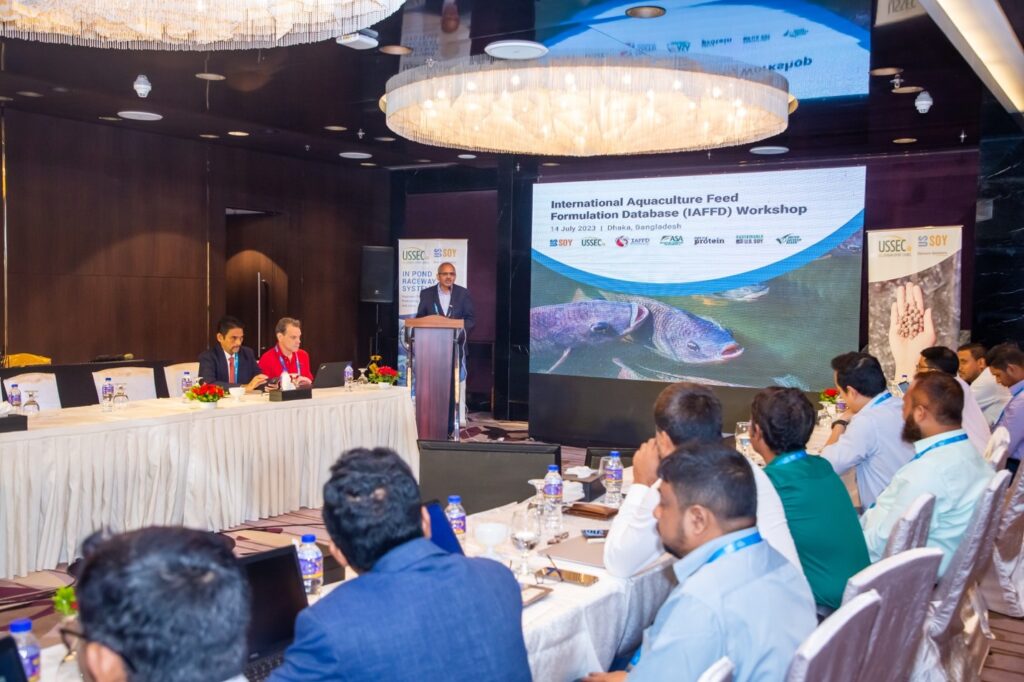
Participants in the International Aquaculture Feed Formulation Database workshops in South Asia learned how to use software to optimize aquafeed rations.
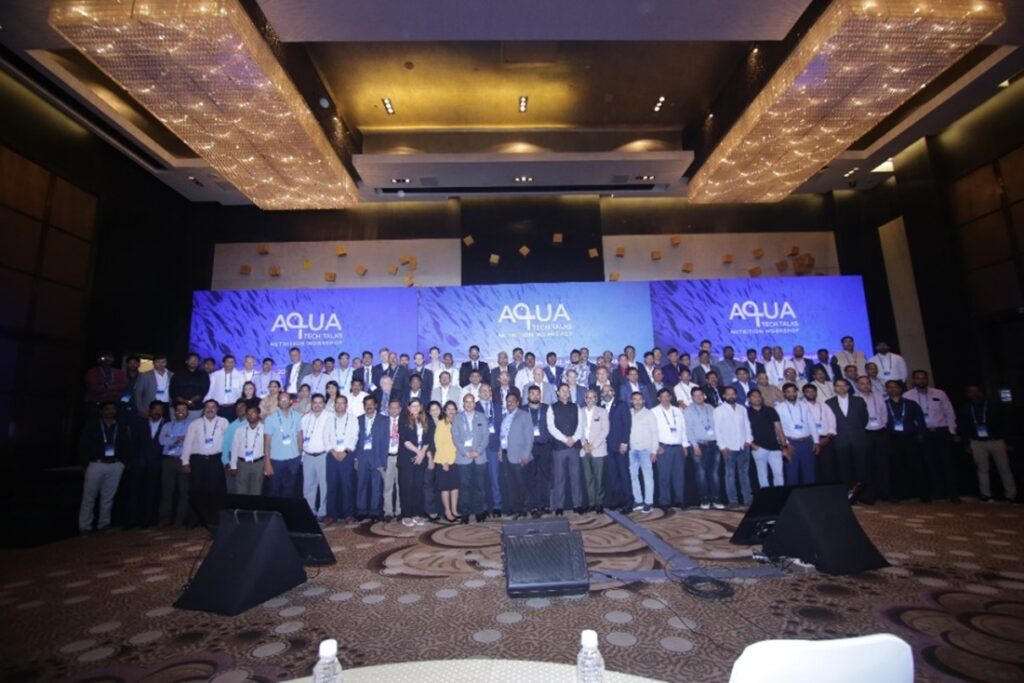
Aqua Tech Talks Nutrition workshop attendees discussed the growing need for sustainable plant protein, like soy, as the top ingredient choice for aquafeeds
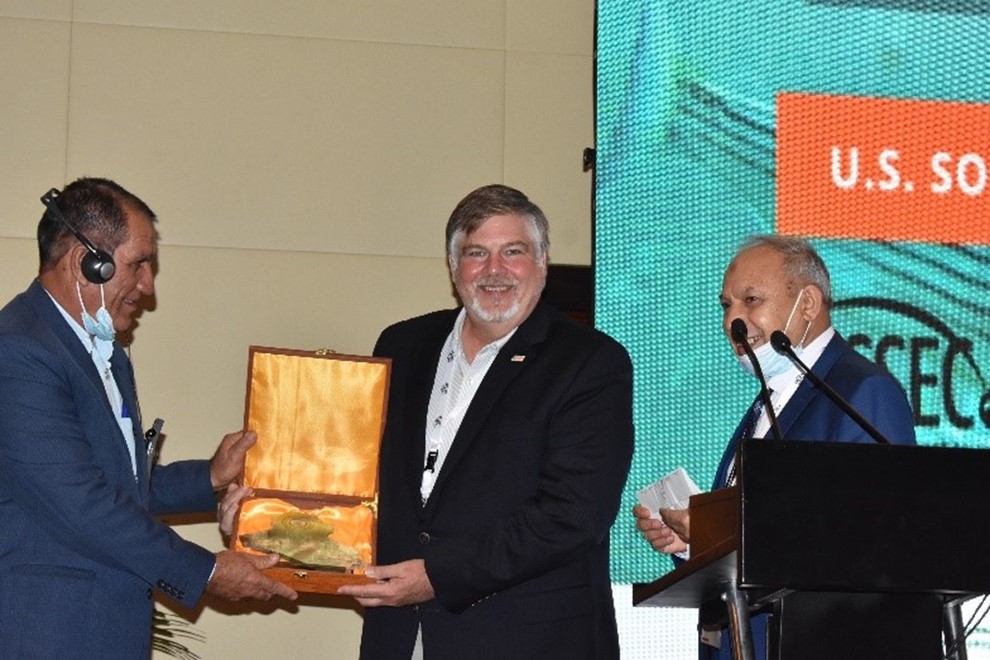
Iraqi Fish Producers Association representatives present a plaque to USSEC leaders, including Stan Born, a Lovington, Illinois farmer and 2023 USSEC chairman, in appreciation of support to develop their industry during a regional aquaculture conference in December 2022.
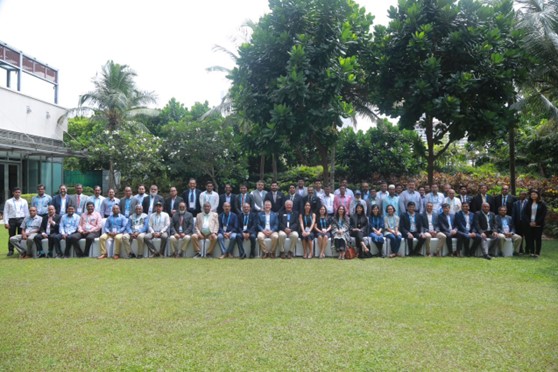
AquaCon Invest participants showcased next generation sustainable aquaculture systems and innovations, while enabling potential investors to form partnerships.